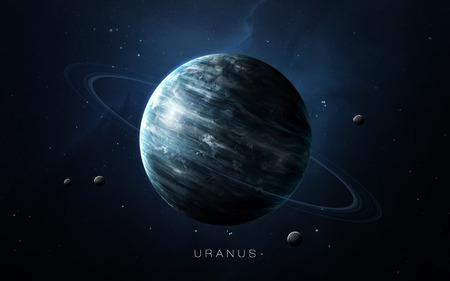
Artist illustration of Uranus. INQUIRER.net File photo
Fresh off its discovery of 10 new Earth-like heavenly bodies, the National Aeronautics Space Administration (NASA) expressed interest in further exploring Neptune and Uranus in the 2030s.
READ: NASA discovers 10 new Earth-size exoplanets
The space agency explored the neighboring planets Mercury, Venus, Mars and even Jupiter and Saturn in previous expeditions, but has few data on Uranus and Neptune, according to New Scientist.
NASA is looking to implement four proposed missions, featuring three orbiters and a fly-by of Uranus. A narrow-angle camera, a doppler imager and a magnetometer will be used to collect data from the famed ice giant’s moons, the report said.
“The preferred mission is an orbiter with an atmospheric probe to either Uranus of Neptune,” Amy Simon, co-chair of the Ice Giants Pre-Decadal Study group, was quoted as saying in the report.
“This provides the highest science value, and allows in depth study of all aspects of either planet’s system: rings, satellites, atmosphere, magnetosphere,” she added.
The report said the unmanned expedition is also expected to probe the planet’s atmospheric gasses and other elements.
Scientists, meanwhile, are hoping the planned missions will be able to determine the composition of the icy giant and classify its internal structure and the abundance of heavy elements.
NASA also hopes to learn more about Neptune’s largest moon, Triton, as well as the formation of the ring systems that orbit it.
Despite its ambitious goals, NASA understands the possible mission hurdles, as the journey would take at least 14 years, and would need an abundance of nuclear power. Using solar power would be futile due to the planet’s absurdly great distance from the sun.
“For Uranus, although the frequency of good launch dates falls off after 2034, there are still good opportunities through 2036,” said Mark Hofstadter at the NASA Jet Propulsion Laboratory. “For Neptune, however, after 2030 it is pretty barren, owing to a lack of Jupiter gravity assists, for another 12 years, to about 2041.”
He added: “So getting going now is helpful for a Uranus mission, and would be absolutely essential for Neptune mission.” Khristian Ibarrola /ra
RELATED STORY:
Chicken sandwich set to be launched in space on July 21